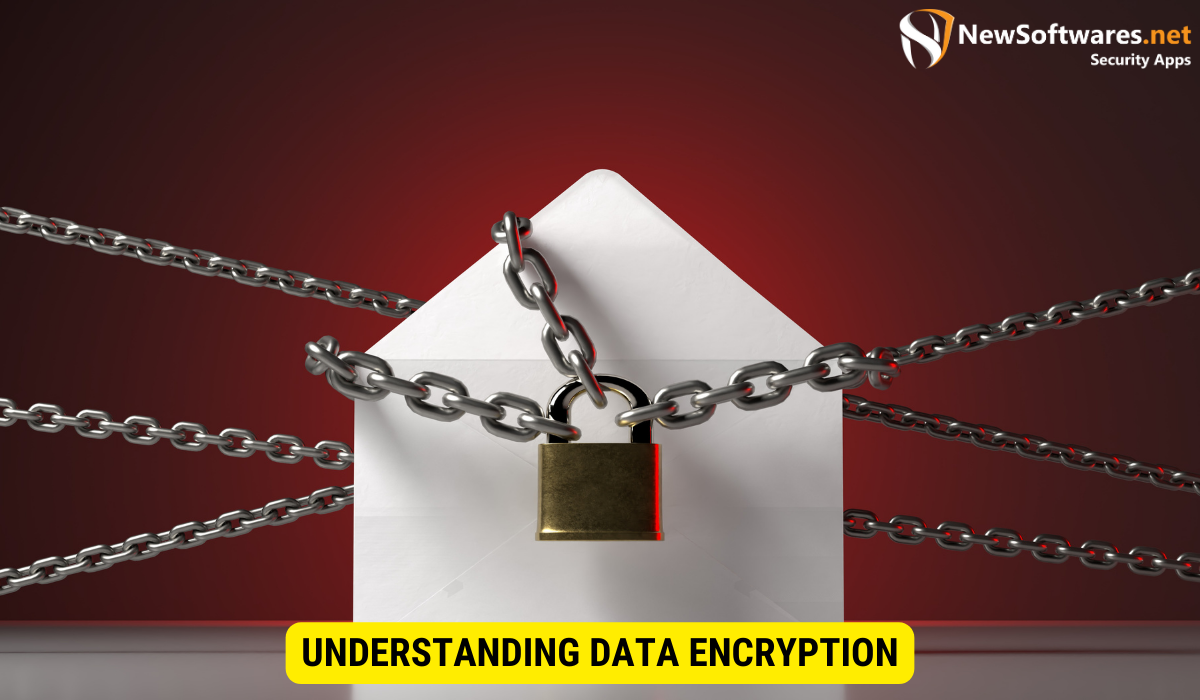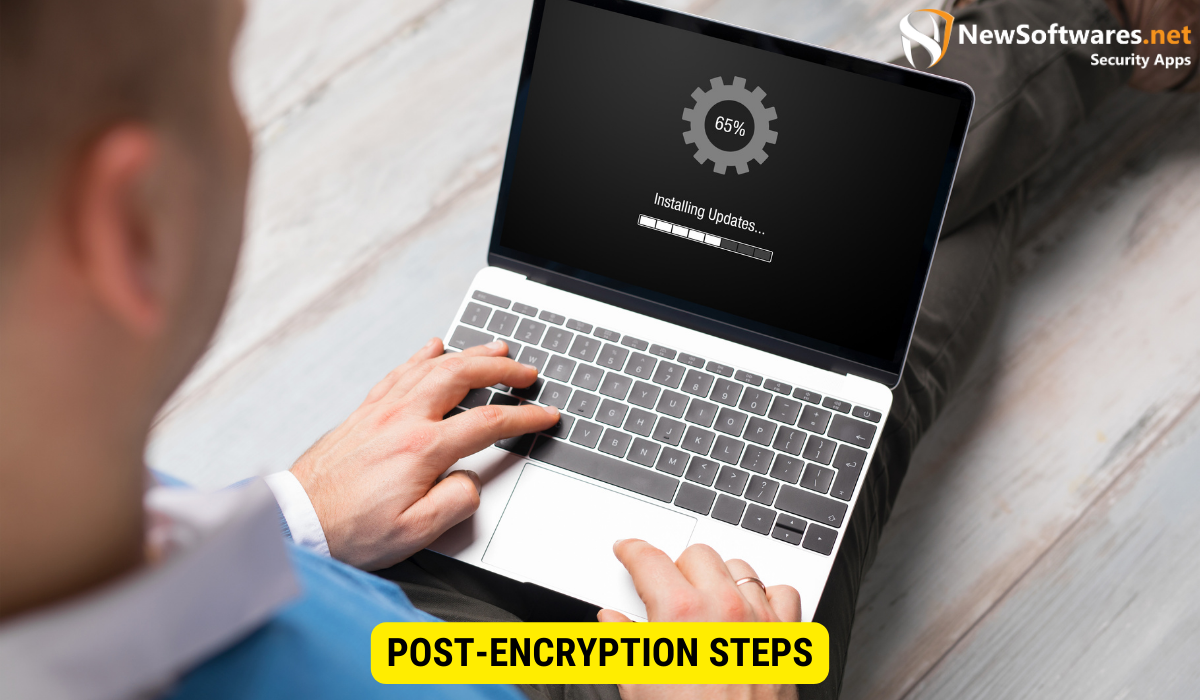To encrypt data on your Samsung S8, follow these steps:
1. Back up your data.
2. Ensure your device is fully charged.
3. Access “Lock screen and security” in Settings.
4. Select “Encrypt device” and follow the prompts.
Expect the process to take time, and manage your encryption key carefully.
Data privacy and security have become increasingly important in today’s digital age. With the amount of personal information stored on our smartphones, it’s crucial to protect our data from unauthorized access. One effective way to secure your data is through encryption. In this article, we will guide you through encrypting data on your Samsung S8, ensuring that your personal information remains safe and secure.
Understanding Data Encryption

Data encryption is the process of converting data into a form that is unreadable to anyone who doesn’t have the encryption key. Essentially, it scrambles the data so that it can only be decrypted with the exact key. This provides an extra layer of defense, making it difficult for hackers or not permitted individuals to access your sensitive information.
What is Data Encryption?
Data encryption is a safety measure that protects your data from unauthorized access. It transforms your information into an unreadable format, making it nearly not possible for anyone without the encryption key to decipher the data.
Data encryption uses complex algorithms to manipulate and convert the data into ciphertext. Ciphertext is the encrypted form of the original data, and it appears as a jumble of characters with no meaning or context. It is extremely challenging to reverse the encryption process and retrieve the original data without the encryption key.
Different types of data encryption algorithms exist, including symmetric & asymmetric encryption. Symmetric Encryption uses a single key for the encryption and decryption processes. In compare, Asymmetric Encryption uses a pair of keys – a public key for encryption and a private key for decryption.
Furthermore, data encryption can be applied to various data types, including files, emails, and databases. This ensures that sensitive information remains protected, regardless of format or storage location.
Why is Data Encryption Important?
Data encryption is essential for some reasons. Firstly, it avoids unauthorized individuals from accessing your personal information, such as your passwords, financial data, or private messages. Encrypting your data creates a barrier that only those with the encryption key can bypass, ensuring that your sensitive information remains secure.
Secondly, encryption ensures your data remains confidential, even if your device is lost or stolen. In such cases, the encrypted data is virtually useless to anyone who doesn’t possess the encryption key. This provides peace of mind, knowing that your data is still protected even if your device falls into the wrong hands.
Your information is vulnerable to hackers and other malicious actors without data encryption. Cybercriminals constantly seek ways to exploit security vulnerabilities and gain unauthorized access to sensitive data. Encrypting your data significantly reduces the risk of data breaches and identity theft.
In addition to protecting personal information, data encryption is also crucial for businesses and organizations. Companies often deal with large volumes of sensitive data, including customer information, financial records, and trade secrets. Encrypting this data helps to safeguard the company’s reputation, maintain customer trust, and comply with data protection regulations.
Furthermore, data encryption plays an important role in secure communication. When you send an encrypted message, only the intended recipient with the exact decryption key can read the message. This ensures that your communication remains private and confidential, even if intercepted by unauthorized parties.
In conclusion, data encryption is a fundamental security measure that protects your information from unauthorized access. It transforms your information into an unreadable format, making it difficult for anyone without the encryption key to decipher the data. By implementing data encryption, you can safeguard your personal information, prevent data breaches, and ensure the confidentiality of your communication.
Preparing Your Samsung S8 for Encryption
Before you encrypt the data on your Samsung S8, there are a few important steps to ensure a smooth process.
Backing Up Your Data
Before encryption, it is crucial to back up all of your data. This includes contacts, photos, videos, and other critical information stored on your device. By backing up your data, you will have a copy of your information in case anything goes wrong during the encryption process.
Ensuring Your Device is Fully Charged
Encryption can be a time-consuming process, and it requires a significant amount of battery power. Therefore, ensuring that your Samsung S8 is fully charged or connected to a consistent power source is essential before starting the encryption process. This will prevent any interruptions due to a low battery during the encryption process.
The Process of Encrypting Your Samsung S8
Now that you have prepared your device, it’s time to begin the encryption process. Follow the steps below to encrypt the data on your Samsung S8.
Accessing the Security Settings
To initiate the encryption process, navigate to the Settings menu on your Samsung S8. Scroll down & tap on the “Lock screen and security” option, followed by “Encrypt device.” You may be prompted to enter your device PIN or password to proceed.
Starting the Encryption Process
Once you have accessed the “Encrypt device” option, you will see a caution message informing you about the implications of encryption. Read the message carefully, as encryption cannot be reversed. If you understand & accept the risks, tap on the “Encrypt device” button to start the encryption process.
The encryption process may take a while, depending on the amount of data stored on your device. It is crucial to keep your device connected to a power source and refrain from restarting or interrupting the process.
What to Expect During Encryption?
While the encryption process is taking place on your Samsung S8, you should keep a few things in mind.
Duration of the Encryption Process
The time it takes to encrypt your device may vary depending on several factors, including the amount of data stored on it and its processing power. It is not uncommon for the encryption process to take several hours, so it’s important to be patient and avoid interrupting it.
Possible Changes to Your Device
After the encryption process, you may notice a few changes on your Samsung S8. For example, the device may take longer to start up, and you may need to enter your PIN or password before the device boots up. Additionally, some features may be limited or disabled to maintain the security of your encrypted data.
Post-Encryption Steps

Once your Samsung S8 has been successfully encrypted, you should follow a few additional steps to ensure a smooth experience.
How to Access Your Encrypted Data
To access your encrypted data, simply unlock your device using your PIN or password. Once unlocked, your device will function normally, and you can access your apps, files, and other data just as you did before encryption.
Managing Your Encryption Key
Your encryption key is an important component of data encryption. It provides access to your encrypted data and should be kept secure. Ensure you have a strong PIN or password to protect your encryption key from unauthorized access.
Additionally, it is advisable to periodically change your PIN or password to further enhance the security of your encrypted data. This will minimize the risk of someone gaining unauthorized access to your device.
Key Takeaways
- Data encryption protects your personal information from unauthorized access and enhances data security.
- Before encrypting your Samsung S8, back up your important data to avoid potential data loss.
- Make sure your device is fully charged before initiating the encryption process.
- Access the Security Settings on your device to start the encryption process.
- After encryption, take the necessary steps to manage your encryption key & ensure the security of your encrypted data.
FAQs
Q: Can I encrypt my Samsung S8 if it’s already been set up and contains data?
A: Yes, you can encrypt your Samsung S8 even if it’s already set up and contains data. However, backing up your data before initiating the encryption process is crucial.
How long does the encryption process take on a Samsung S8?
The duration of the encryption process may vary depending on several factors, such as the amount of data stored on the device. It can take several hours to complete, so it’s important to be patient and avoid interrupting the process.
Can I access my encrypted data on another device?
You cannot access your encrypted data on another device. The data can only be accessed on the specific Samsung S8 that was encrypted.
What happens if I forget my PIN or password after encrypting my device?
If you forget your PIN or password, you may permanently lose access to your encoded data. It is essential to choose a PIN or password that is easy for you to keep in mind but difficult for others to guess.
Is data encryption necessary for every Samsung S8 user?
Data encryption is not mandatory, but it is highly recommended for every Samsung S8 user. It adds a layer of security to your personal information and protects against potential data breaches.
Conclusion
Data encryption is vital in ensuring the security of your personal information on your Samsung S8. Following the step-by-step guide you can encrypt your device and protect your data from unauthorized access. Remember to regularly back up your data and manage your encryption key to maintain the security of your encrypted information. Taking these precautions lets you enjoy peace of mind, knowing that your data is safe and secure.
